What if I told you one part could reduce your AR-15 rifle’s recoil, reduce wear, and even open up a wide variety of customization options?
Sound too good to be true?
It’s not, I promise.
Through an adjustable gas block, all this is possible.
An adjustable gas block offers a variety of advantages over a standard block. Today we are going to go over those advantages, how to choose an adjustable gas block, and how to tune one.
THE QUICK LIST
-
Best for Suppressors
-
Budget-Friendly
-
Best Railed Block
-
Editor’s Pick
Table of Contents
Loading…
How We Chose the Best Gas Blocks
The entire team at Pew Pew Tactical had a hand in contributing to this post. Most of us have tinkered and worked on our guns and, at some point, messed around with gas blocks.
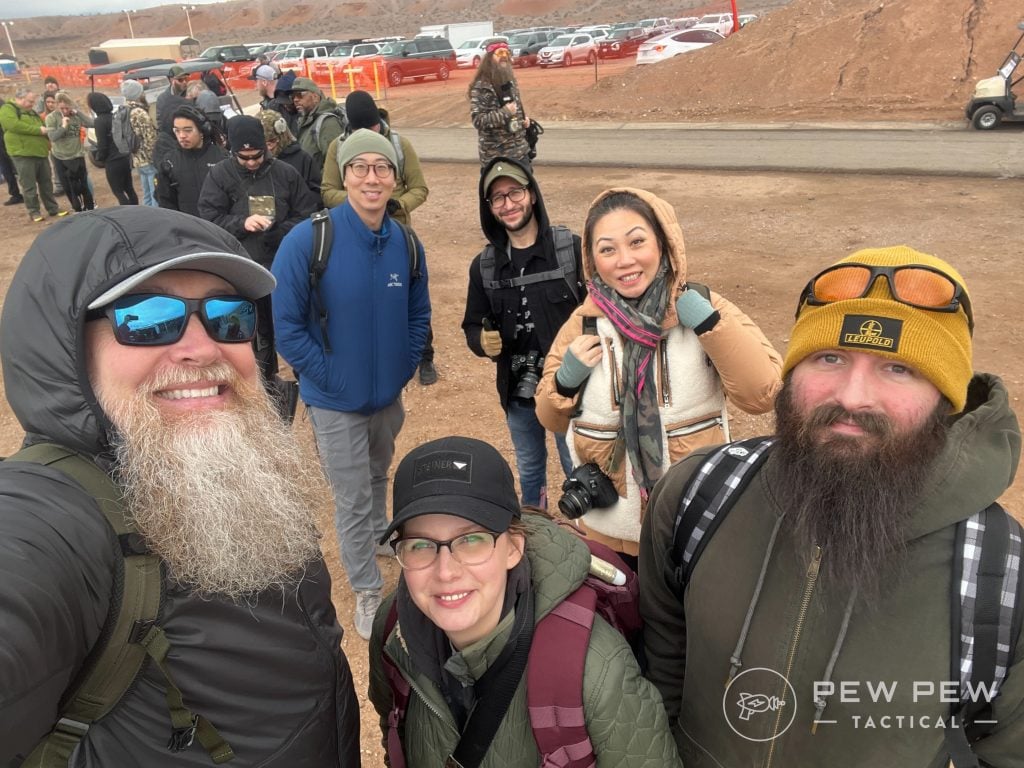
So, we know a thing or two about what goes into a decent one.
We constantly test gear and regularly update articles as new models become available, so if you’re favorite isn’t here, check back soon!
Best Adjustable Gas Blocks
1. JP Enterprises Adjustable Gas Block with A2 Front Sight
Prices accurate at time of writing
Prices accurate at time of writing
-
25% off all OAKLEY products - OAKLEY25
Copied! Visit Merchant
Pros
- Built in front sight
- Retro aesthetic
Cons
- Not clone correct
Serving as an upgraded version of the standard A2-style front sight that has served the military for generations, the JP Enterprises adjustable gas block is a great option for those wanting a retro aesthetic with modern functionality.
It’s well made, rock-solid in design, and co-witnesses perfectly with most other optics.
2. Superlative Arms Adjustable Gas Block
Prices accurate at time of writing
Prices accurate at time of writing
-
25% off all OAKLEY products - OAKLEY25
Copied! Visit Merchant
Pros
- Great for suppressors
- 3-in-1 function
Cons
- More expensive than other regular adjustable gas blocks
A popular option, the Superlative Arms adjustable gas block also offers a bleed-off hole to reduce gas blowback when rocking a suppressor.
Be sure to check out our complete Superlative Arms Adjustable Gas Block review as well!
What’s your take on the Superlative Arms? Rate them below!
3. Seekins’ Adjustable Gas Block
Prices accurate at time of writing
Prices accurate at time of writing
-
25% off all OAKLEY products - OAKLEY25
Copied! Visit Merchant
Pros
- Affordable
- Simple-but-effective design
Cons
- Needs tool for adjustment
A more affordable option is the Seekins Precision adjustable gas block. It’s what I used to run in previous rifles but sometimes my handguard configuration wouldn’t let me reach the gas detent.
Plus…it doesn’t have the bleed-off option. But if you’re looking for a plain Jane block that works…the Seekins is great.
4. Precision Reflex Picatinny Railed Gas Block
Prices accurate at time of writing
Prices accurate at time of writing
-
25% off all OAKLEY products - OAKLEY25
Copied! Visit Merchant
Pros
- Able to mount most standard iron sights
- Extended front cantilever
Cons
- Not great for long handguards
The Precision Reflex Picatinny railed gas block allows you to utilize any front sight that would attach to a standard Picatinny rail.
5. Riflespeed Gas Control System
Prices accurate at time of writing
Prices accurate at time of writing
-
25% off all OAKLEY products - OAKLEY25
Copied! Visit Merchant
Pros
- Adjustable without tools
- Multiple sizes available
Cons
- Expensive
Without a doubt, the most expensive, but arguably the best of the list, Riflespeed Gas Control System has a really useful innovation — it is adjustable without tools.
The company makes a number of different configurations which allow you to pick the right length for your setup.
Shooters can install the block with the correct length control so it is accessible at the end of the rail. The numbered control lets you know what amount of gas you’re using.
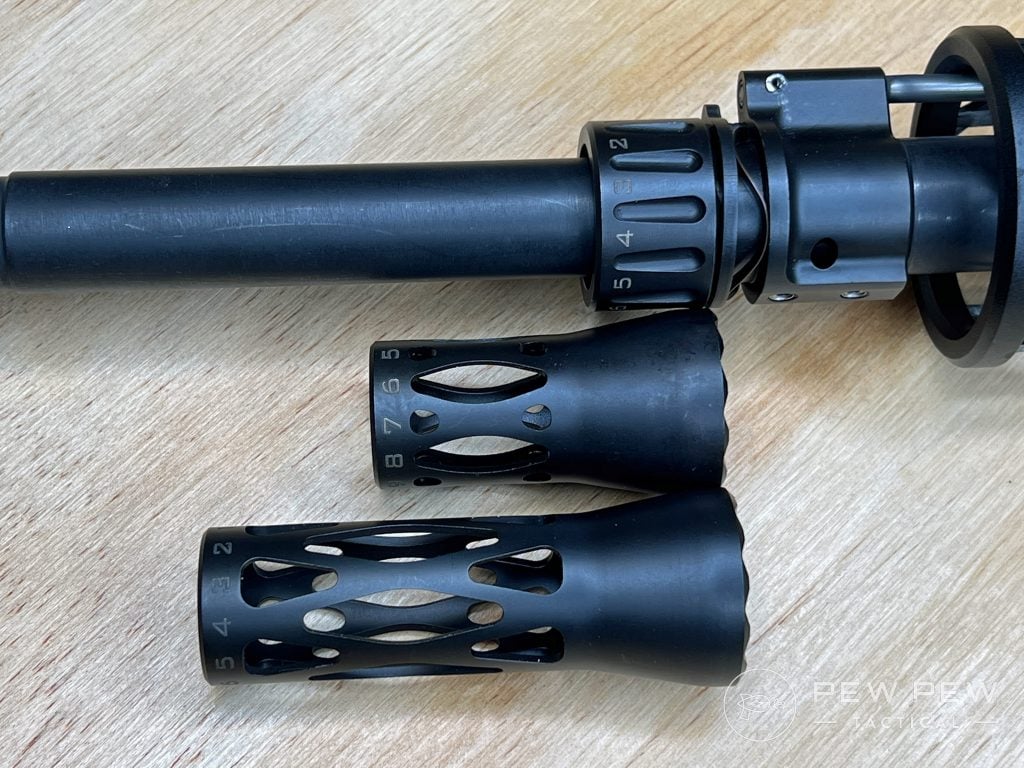
People without tools, time, or inclination can also buy uppers from Riflespeed with the system already installed.
How to Tune an Adjustable Gas Block
So this is a very simple process. Depending on your gas block and rail system, you may want to leave the rail uninstalled.
This sounds crazy, but you have to be able to adjust the gas block. Wear some gloves, and hold the mag well.
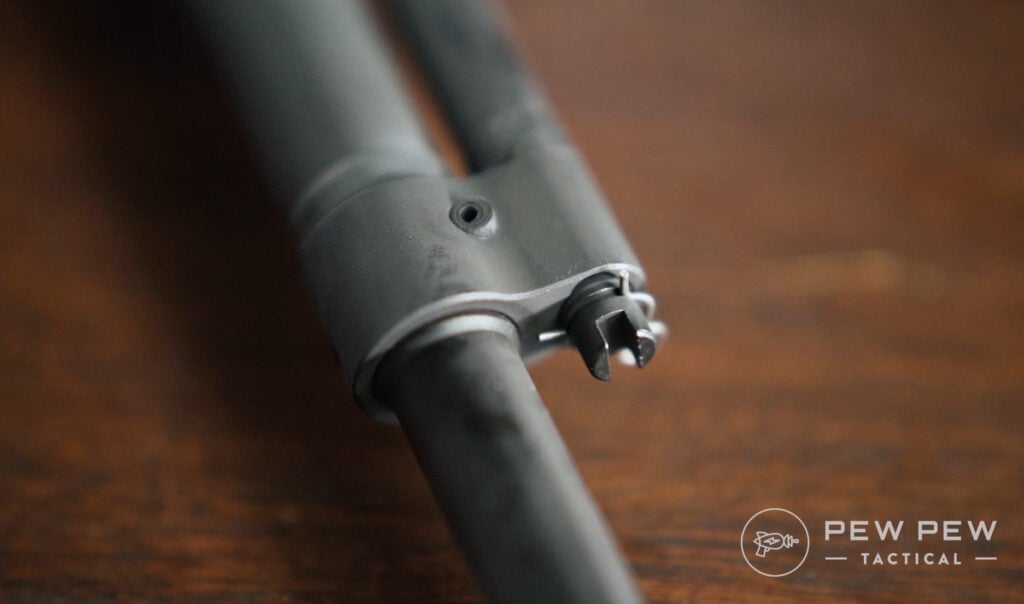
Accuracy isn’t the major issue here, so a solid shooting position isn’t needed. If you can reach your gas block and adjust it with the rail system in place, then do so.
Grab the load you plan to shoot the most through your rifle or the load that will be most important in your rifle.
For example, if you hunt with your AR-15, you want to tune the rifle to your hunting ammo and not your plinking ammo.
Make sure you know which way opens and which way restricts gas flow. I would start with it opened to allow maximum pressure.
Load a magazine with one solitary round and test how it cycles. You are looking for two things, how reliably the round cycles the action and if the bolt locks to the rear with an empty magazine.
If the weapon cycles perfectly and the bolt locks to the rear, restrict the gas flow by a ½ turn of the adjustment screw.
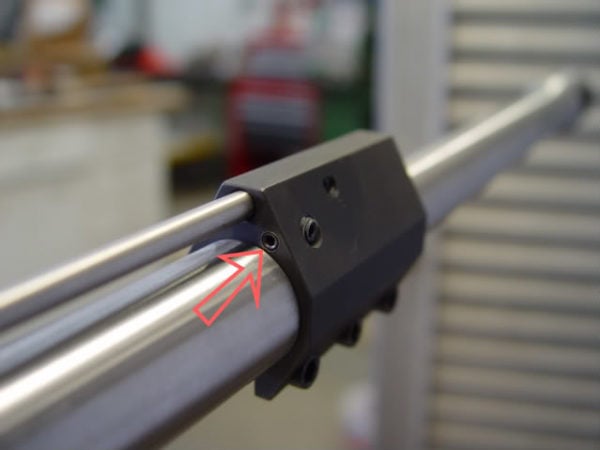
Repeat loading one round per magazine and firing, observing cycling and the bolt locking to the rear. Restrict the gas system another ½ turn.
Rinse and repeat until the bolt does not lock backward on an empty magazine. At that point, open the gas system ¼ turn. Repeat the test.
If it locks back, that is your optimal gas setting.
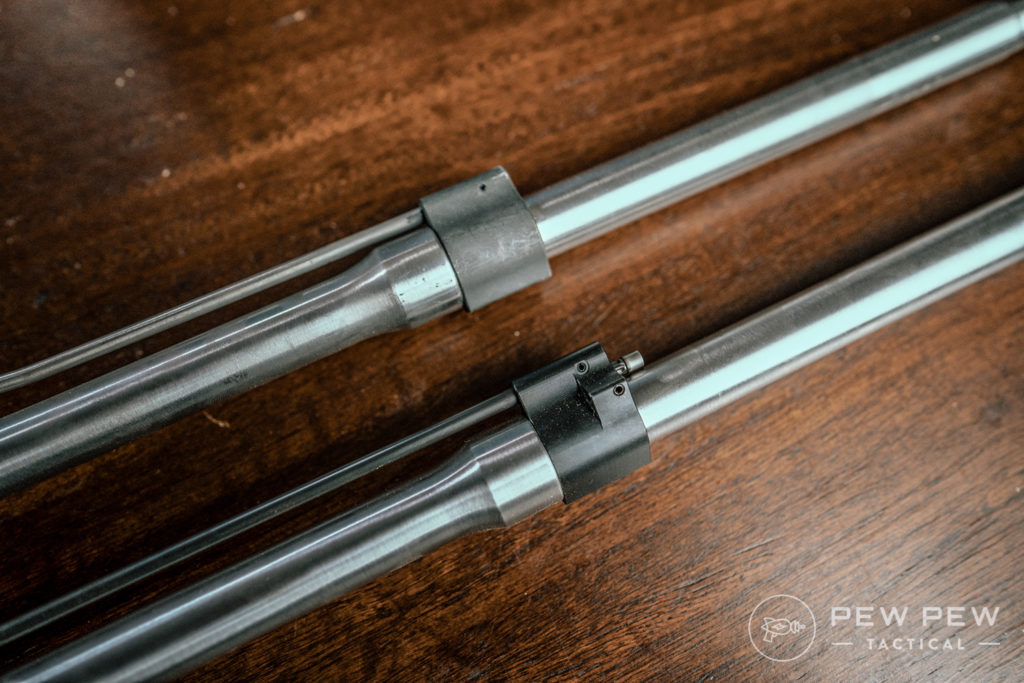
If the bolt still fails to lock to the open, adjust the system another ¼ turn, and this is your optimal setting.
Run a magazine through the weapon and ensure it cycles reliably.
In this setting, the rifle will cycle with the least amount of recoil and place the least amount of wear and tear on your internals (and your shoulder).
Why Bother with an Adjustable Gas Block?
It’s important to understand how direct impingement works to understand the value of an adjustable gas block.
Direct impingement works by taking advantage of the gasses produced by burning gunpowder to cycle the rifle. The gas propels the projectile downrange, and as it travels through the barrel, a bit of that gas bleeds off.

The gas goes through a port on the barrel, into the gas block (the bit we’re talking about today), and down the gas tube.
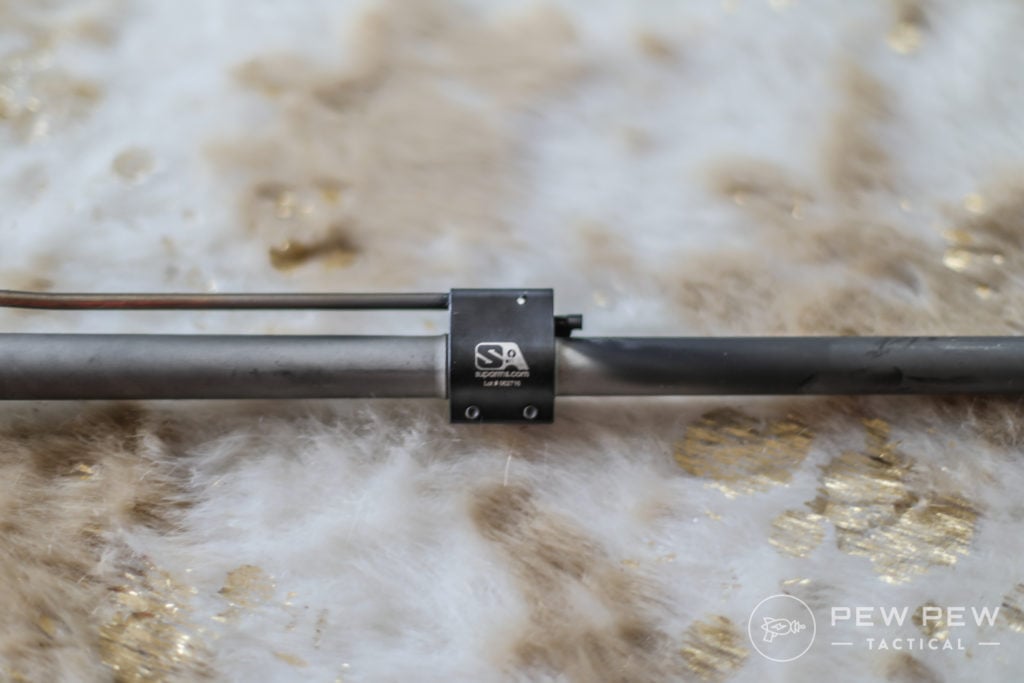
The gas goes back into the receiver and pushes the bolt rearward, which extracts and ejects the round. It strikes the buffer, which in turn compresses a spring and sends the entire system forward after the spring hits its apex.
This entire system of operation relies on gas, and therefore the gas system becomes incredibly important.
The gas system is composed of the gas block and gas tube. There isn’t much you can do with a gas tube — it’s a steel tube, and the way it affects the rifle is generally tied to its length.
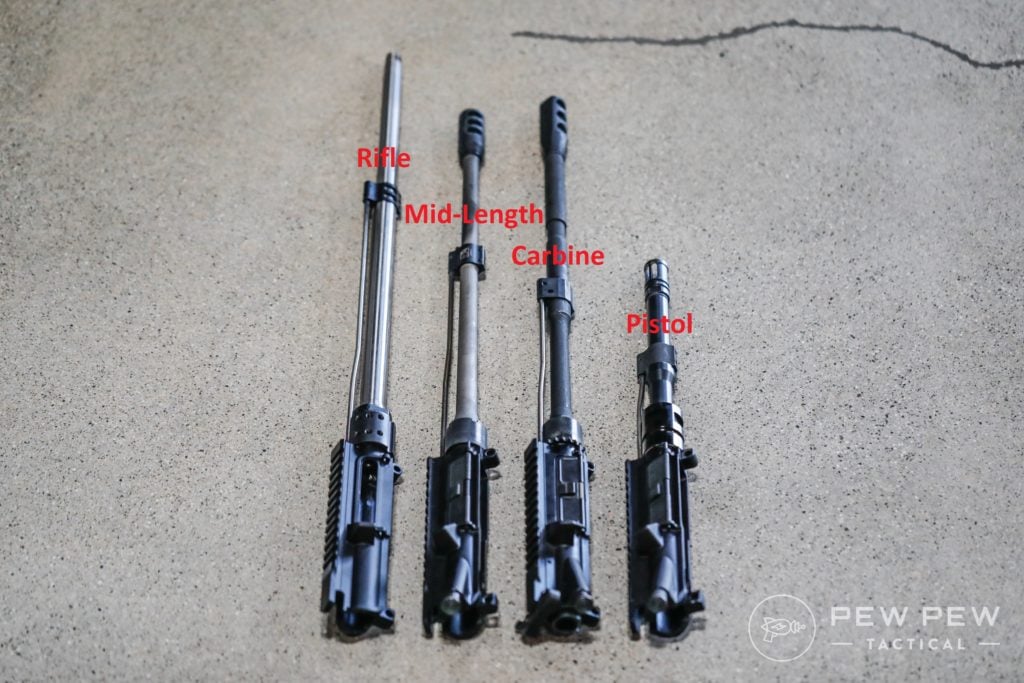
Where Does the Gas Block Come In?
The gas block, however, is what bleeds the gas from the round to the gas tube. The gas block can be adjusted or swapped out entirely to create a variety of changes in the rifle.
A fixed gas block allows a set amount of gas to flow through the system. This is basically a one-size-fits-all approach for rifles.
It doesn’t take into account different types of ammunition, suppressor use, buffer weight, or BCG weight (and the fact that many BCGs have vastly different weights).
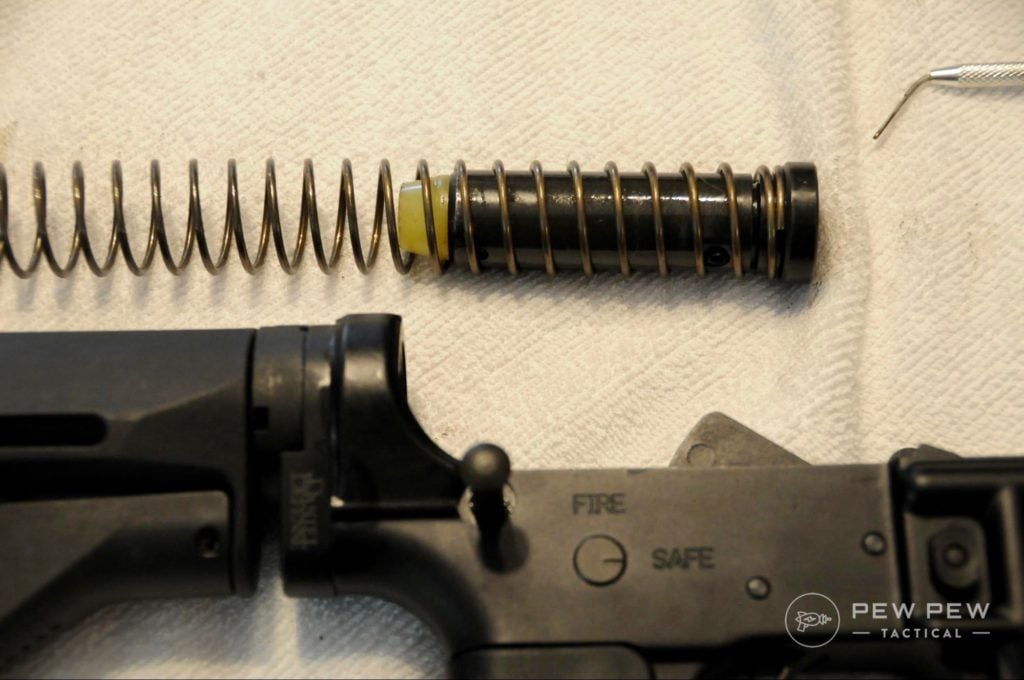
An adjustable gas block allows you to fine-tune the gas needed to run the system. This allows shooters to tune their rifles for different ammunition types, for different weight internals, and of course, suppressor use.
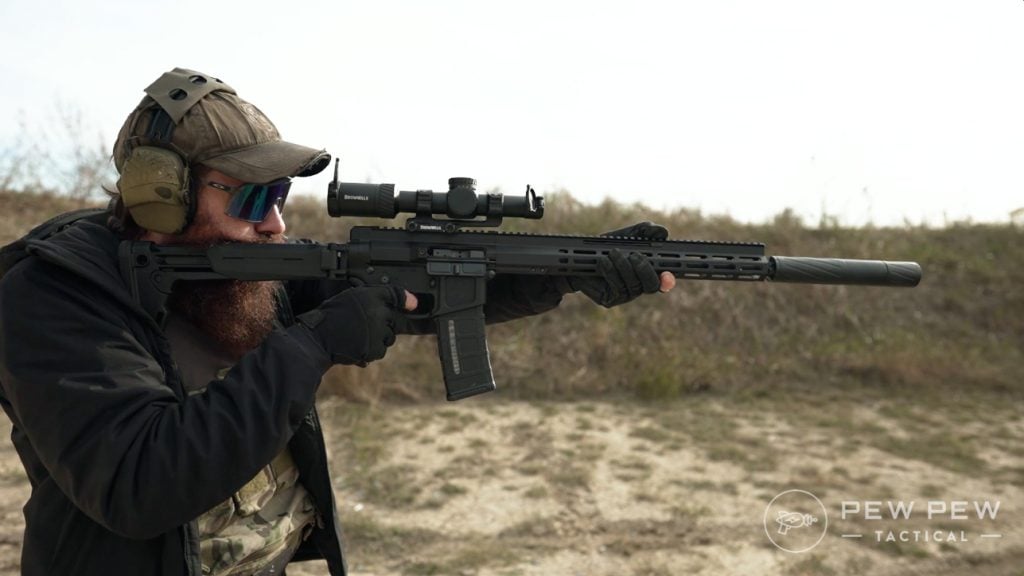
Over-Gassed
Most rifles are actually over-gassed, meaning more gas flows through the system than necessary.
Is this a bad thing?
I mean, it’s not the kind of gas you pay by the gallon for, right? Well, there are a few issues with over-gassed rifles.
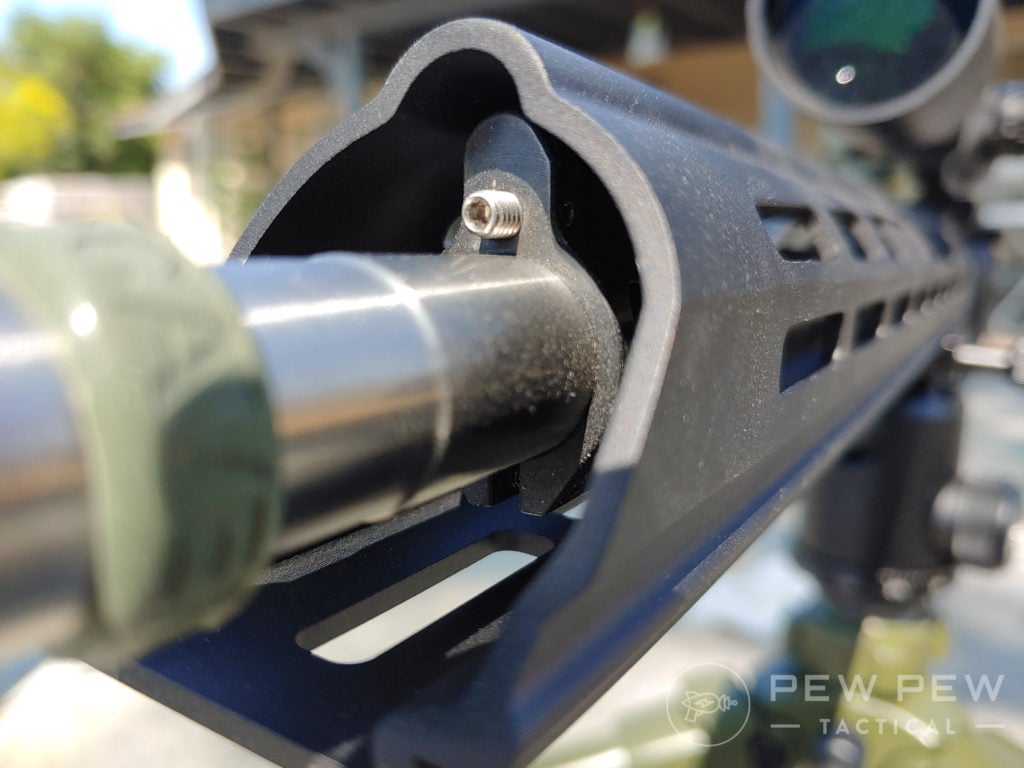
First, you are actually getting more recoil. More gas flowing rearwards means more force, and more force means more felt recoil.
This can even be true if you’re rocking the very best lightweight bolt carrier group.
Recoil makes for a harder-to-control gun, which degrades your accuracy.
An over-gassed gun is also going to run hotter and dirtier. And not the fun kind of hotter and dirtier, either.

The extra gas and debris are going to raise the internal temperature and create a much dirtier gun.
That extra carbon build-up makes the rifle less reliable and increases the likelihood you’ll get a failure-to-fire or failure-to-feed issue.
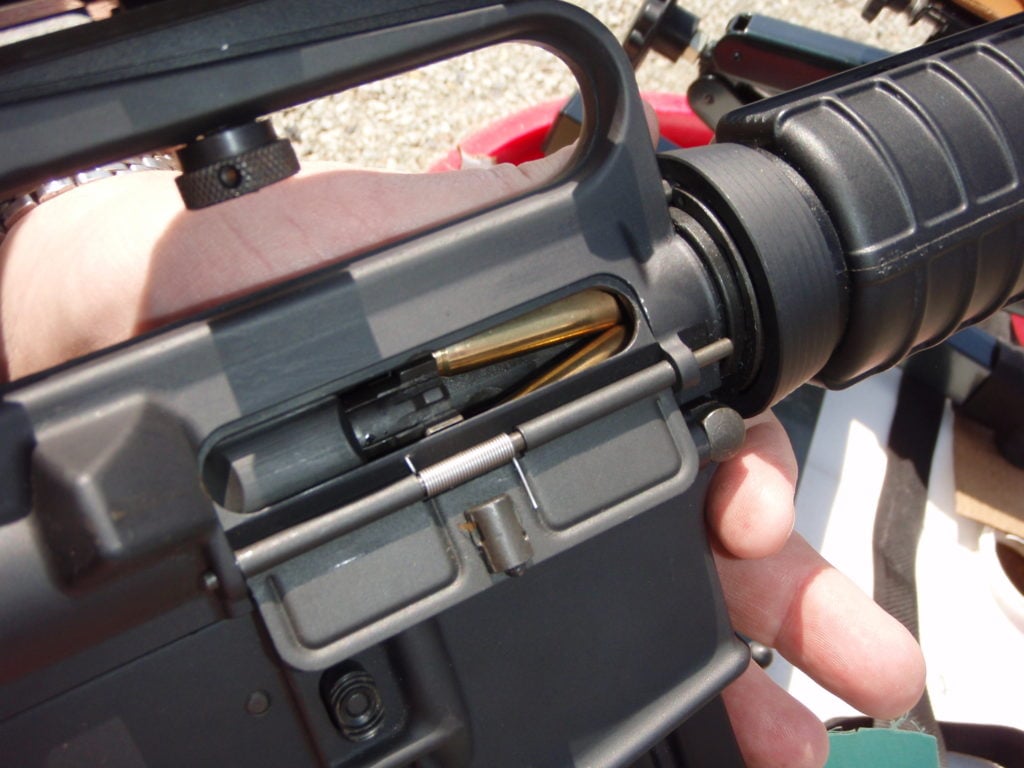
Next, we should focus on wear. Over-gassing has also been tied to locking lugs wearing out well before their time is up.
The fact the bolt is being shot backward with excess force could result in a loosened gas key over time as well.
When to Crank Up the Gas
To be completely fair, there is a time for over-gassing. When a rifle has been run hard, is filthy dirty, full of carbon and sand, and moon dust — then you need that extra gas.
That extra gas keeps everything moving when the inside of your gun looks like a dirty litter box. With an adjustable gas block, when things get wicked, simply open the gas block up and let it flow.
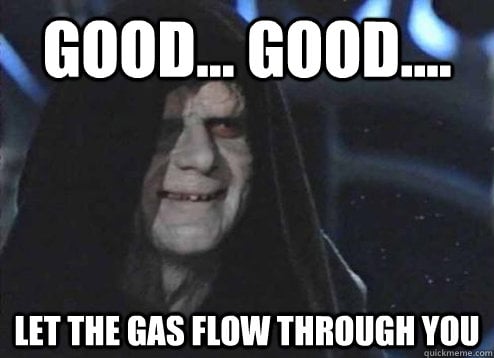
Most adjustable gas blocks are designed to be used with a simple key to adjust the system. These adjustment areas are easy to access, even with a rail system over the gas block.
How to Choose an Adjustable Gas Block
You choose an adjustable gas block the same way you choose most parts for your rifle. You choose based on both your preferences and needs (and price, most of the time).
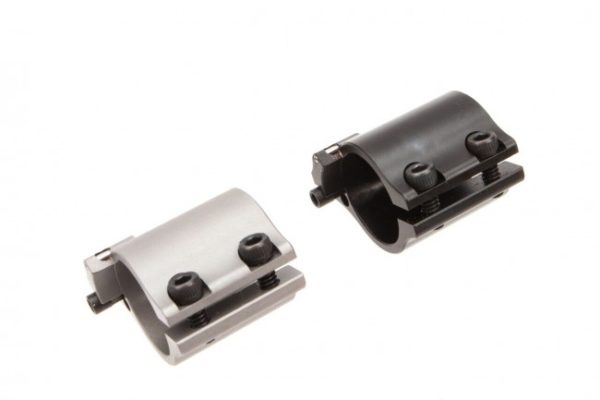
There are actually a wide variety of different options when it comes to adjustable gas blocks.
Size-Wise
Like regular gas blocks, adjustable gas blocks come in a variety of different sizes. You have the standard .750 for your normal medium profile barrel and .875 for those special snowflake barrels.
We also have .936 for heavy bull barrels and .625 for pencil barrels.
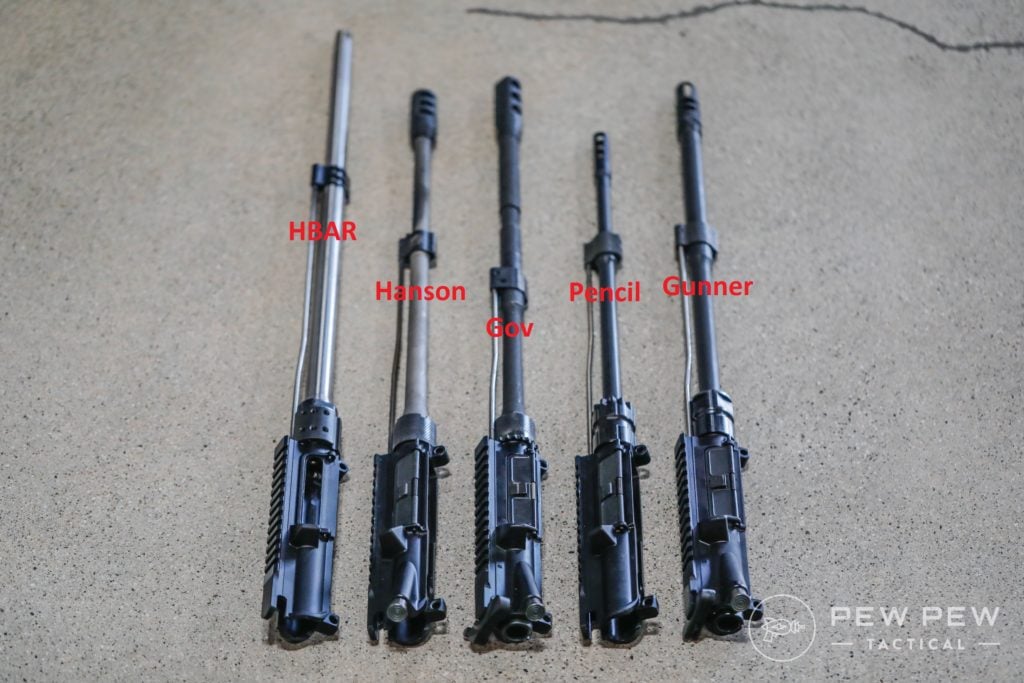
You’ll need to know the barrel profile you want or what you have before choosing an adjustable gas block. One note is that an adjustable gas block allows you to make a very lightweight rifle, and a pencil barrel is beneficial to this.
Types of Adjustable Gas Blocks
Personally, I really like a fixed front sight. Something about the stability and simplicity really appeals to me.
As a Marine, I’m quite used to the A-frame style fixed front sight, and I like it. This, unfortunately, means I really can’t use a free-floating rail system.
My choices for full-length rail systems are also limited depending on where my front sight is fixed on the barrel.
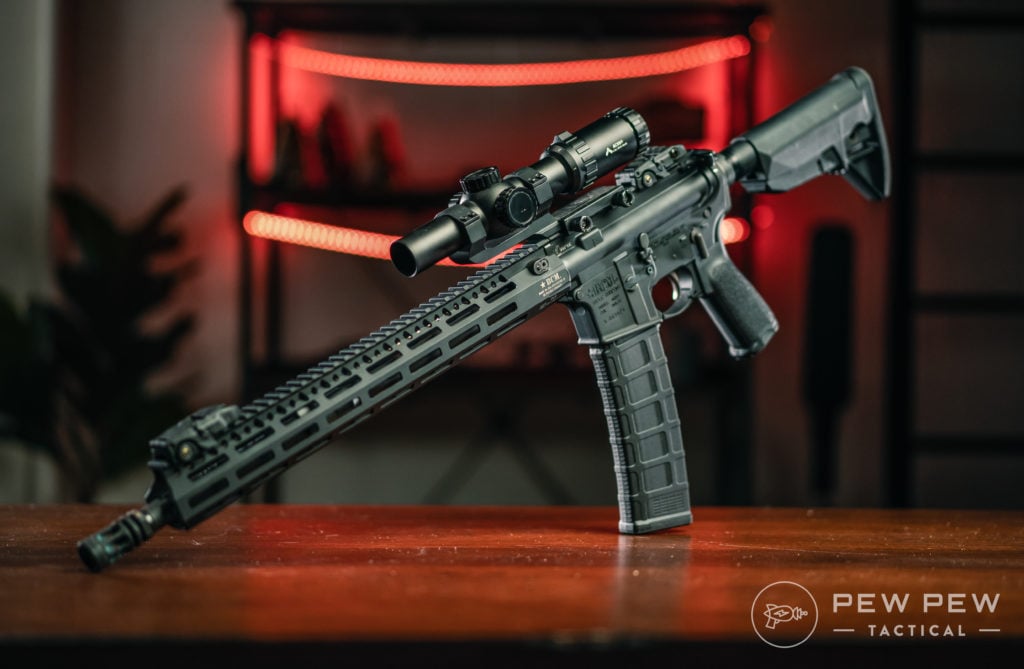
A free-floating rail system can help with the overall mechanical accuracy of a rifle, and to run a free-floating rail system, I am going to need to run a low-profile gas block.
A low-pro gas block disappears underneath a rail system. These low-profile gas blocks allow the user to utilize a longer rail system that could extend all the way up to the muzzle device.
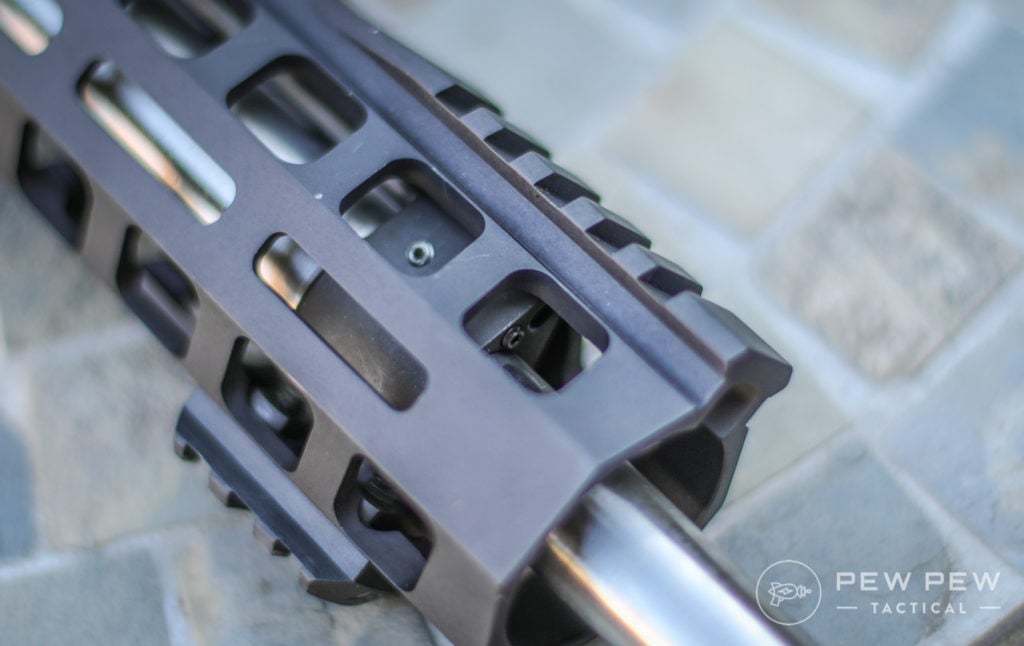
These rails are popular with those using the C-Clamp style of shooting like you’ll see in most competitive shooting matches.
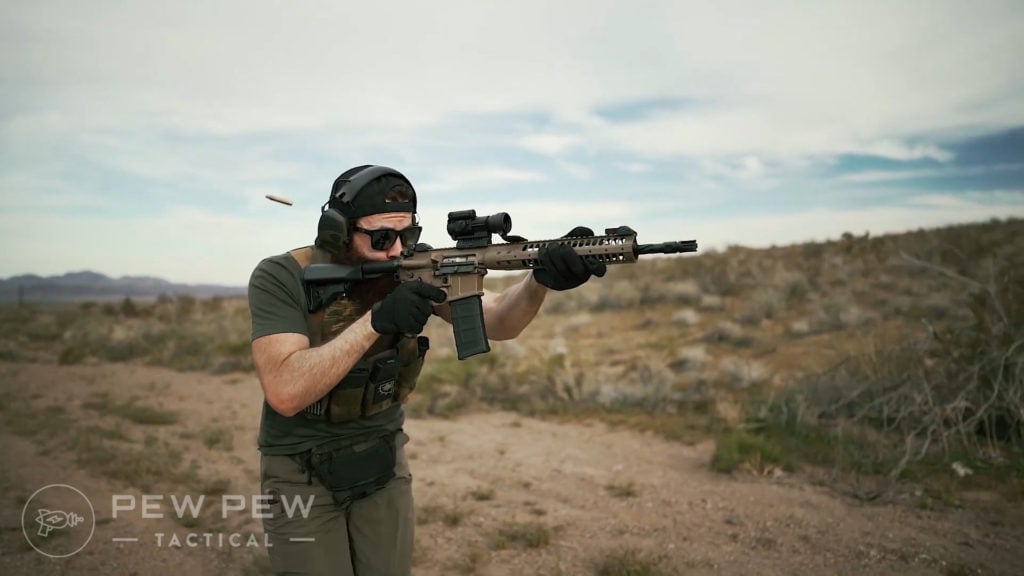
There are also railed gas blocks. These gas blocks are basically low-profile gas blocks with a Picatinny rail installed on them. This system is excellent if you have a set of detachable flip-up iron sights you’d like to use.
Now what about clamp or set screws? I personally like clamps since they probably more evenly distribute the stress onto the barrel.
But if you really want to make sure your block doesn’t move…dimple your barrel (if it isn’t already) and get the set screws.
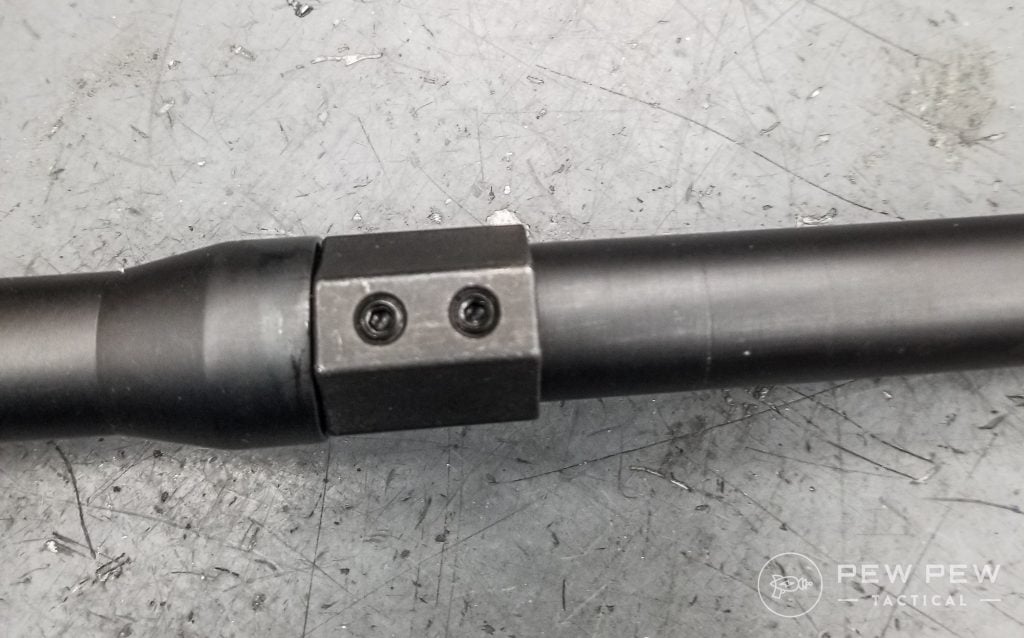
FAQs
Are adjustable gas blocks really worth it?
It's a good idea if you plan to shoot with a suppressor or try various ammunition since it gives you the ability to change the amount of gas to the chamber.
Do adjustable gas blocks make a difference when shooting?
Yes! They can help reduce recoil and wear/tear on parts. If you shoot suppressed, they also help out.
Do I have to use an adjustable gas block with a suppressor?
You don't have to if the rifle runs fine without it but it is handy if you like to swap ammo around or if you find the rifle isn't performing the way you want it.
Final Thoughts
An adjustable gas block is slightly more expensive than a regular gas block, but it does so much more.
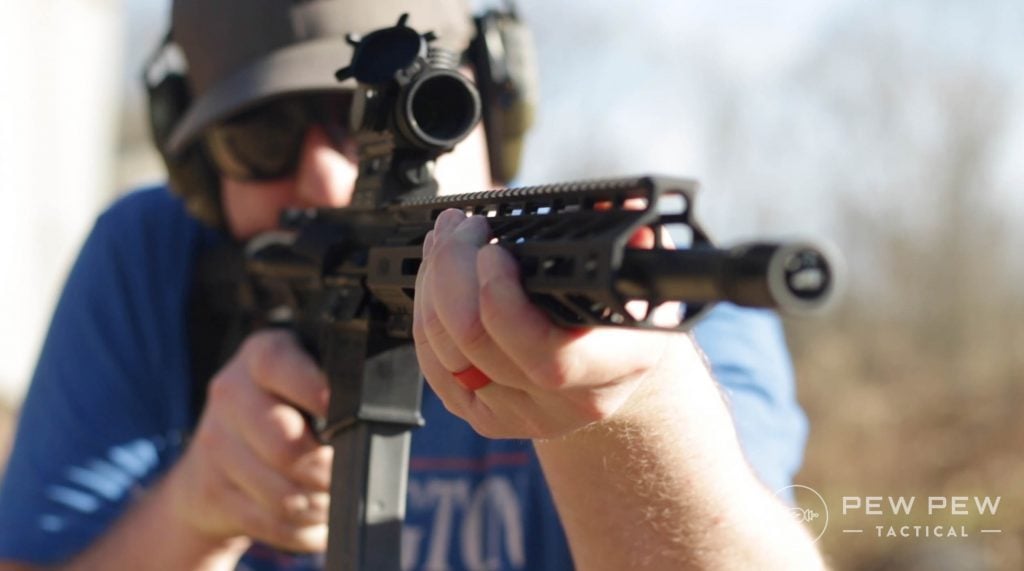
This is one of the most important parts of your rifle. I don’t think it will be long until adjustable gas blocks will be standard among manufacturers.
Was this helpful in your quest to find the perfect gas block? Speaking of accessories that should be standard, you need a red dot or optic. Our list of Best AR-15 Optics & Scopes will help you find what is right for you.
Latest Updates
Mar. 2024: Removed DoubleStar railed gas block. Added PRI railed gas block.

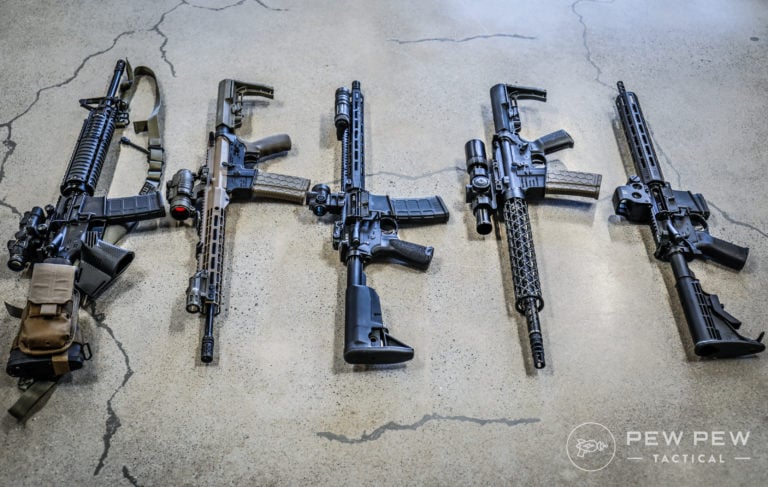
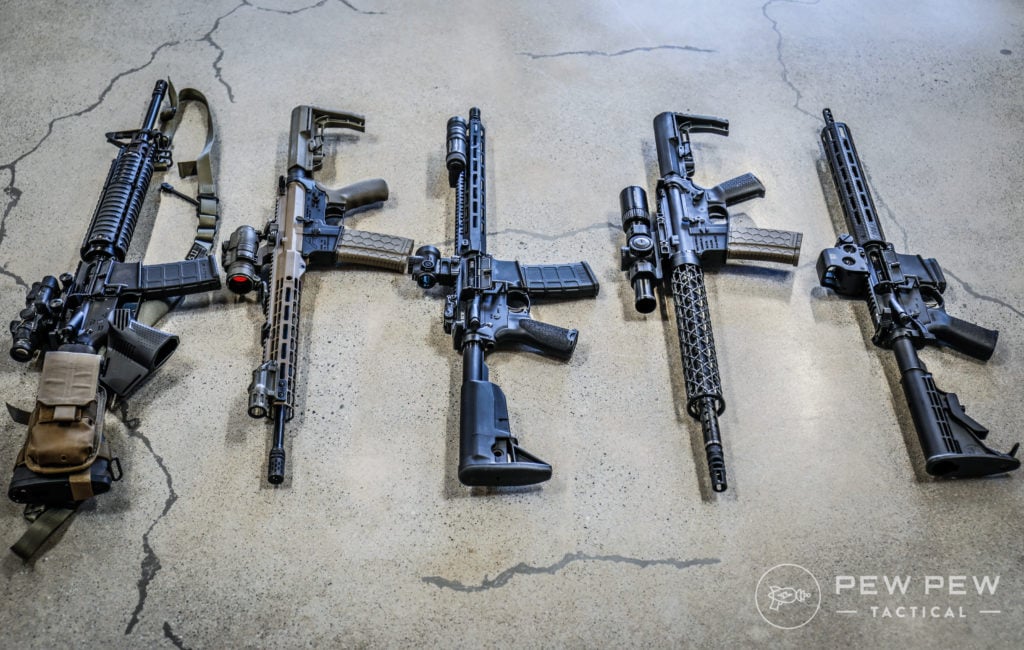
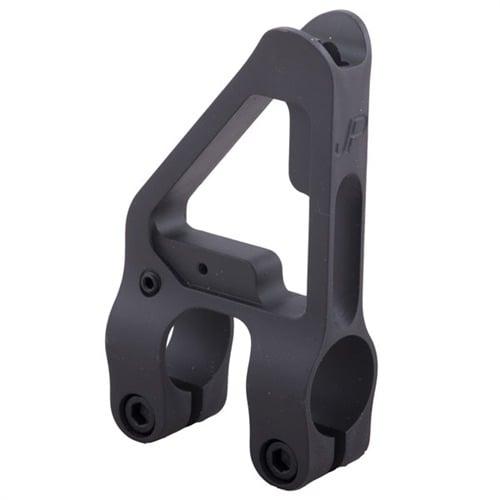
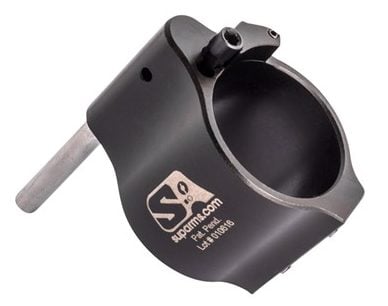
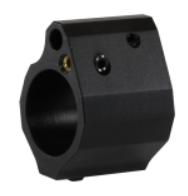

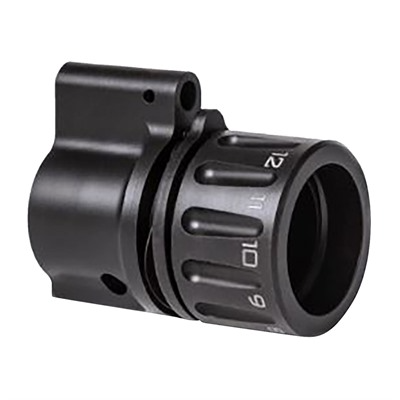







34 Leave a Reply
None of the off-page links to OEM sites from this page are functional.
Made the mistake of buying a budget 6.5 Grendel upper. It absolutely will not cycle steel-cased ammo. It has no problem cycling brass ammo. Will a quality adjustable gas block remedy my problem or am I stuck with 4K rds of Wolf ammo and nothing to shoot it out of??
I'm building a .300 blk with a 16" barrel from Stag Arms. (Thanks Biden.)
It has a pistol length gas port.
I'll be running it subpressed /w subs most of the time.
Any benifits from using an ajustable gas block.?
Thanks.
Most pistol length .300 BLK guns should run fine out of the gate, but an adjustable gas block will still help you tune it to ensure you are getting an ideal ejection pattern and recoil impulse. Definitely not necessary in most cases if you have the correct buffer setup, but it can still be a nice finishing touch to make it softer shooting. Also, with an adjustable, you can shut the gas all the way off if you want/need to make a suppressed shot and have the action not cycle.
SLR and Odin are nice, but some time ago I tried Wojtek Weaponry gas block and this is what I'm going to use on all my rifles since.
No mention of SLR's adjustable gas block, ouch, I'd think that'd give superlative arms a run for #1
Yeah but as rude as SLR's is.... I would still rather own superlative
Super informative! Thank you.
The 300 BLK is quite popular among my friends, and I think I will be experimenting soon with the 277 Wolverine. Both of these chamberings have loadings with a heavy bullet or a light bullet, so that fact brought my research to adjustable gas-blocks. This article is the best description of the why and how. I will be looking for more articles that you have written on the AR15 platform.
I am working on my first LR-10 build. Will these blocks work for an 18" rifle length tube?
Thanks
Yes, gas block doesn't care about tube length -- just make sure you get a block that fits your barrel's shoulder size and you're good to go!
I use the JP adj block 7 clicks for the 168gr in a 24" bull barrel.
I just acquired a new DPMS Mod A-150 chambered for a .204 ruger. The rifle shots well but there is an excessive amount of carbon build up. Would I benefit by changing the factory Gas block to an adjustable gas block. And if so, which type, pinned or set screw? What Mfg would you recommend. Thanks
I personally like the Wilson combat adjustable gas blocks. Superlative makes a good block too.
I don't find much difference between pin in or set screw. As long as you have your barrel dimpled and torque the set screws properly with blue lock tite they are not coming loose.
Clamp on gas blocks work really well too. There are many good adjustable options available.
Any experience with the PSA adjustable gas block?
It's a bit hard to justify a $90 upgrade if you're running a $450 rifle to begin with... $40 seems much more appropriate for what literally amounts to adding a set screw to partially block the gas port.
Not yet but we have their new gen of AR-10 incoming that has an adjustable gas block.
Any word on this PSA part yet?
You should consider Odin Works 20 position gas block for a low profile AGB. I've used 7 different AGBs, including the ones listed here, and the Odin was the best. Low enough for even BCM'S SLIM handguards, 20 solid and tactile detents, and adjustable from the front.
Our locally made adjustable gasblock with no tools needed for adjustments. With fron idle control.
Is there a gas block for the AR-10 that is similar to what some SKS's have, a simple on/off that allows you to manually cycle the action? Would this be beneficial for long range accuracy? Would it help with suppression?
Already tested in NRA article. Difference is very minimal once you are in rifle length, like 20 fps. And rifle length is what you get for long barrels.
Is there any gas blocks that have predetermined setting for suppression. Like you find on say the Scar?
There are a number of gas blocks that have suppressor specific settings (the Noveske Switchblock and some Odin Works offerings spring to mind first) but most these days are going to have a finer range of adjustment than just "suppressed or unsuppressed" so you can tune your specific rifle and load to get the optimal results.
Primary Weapons Systems has a 3-setting gas block for unsuppressed, suppressed with subsonic ammo, and suppressed with regular ammo.
I was just wondering if the superlative adjustable gas block will fit with an 18".223 wylde fluted barrel.
They have all the normal sizes out there: .625, .750, or .936"
I am trying to find an adjustable gas block for my pencil barrelled DPMS AR-15 Oracle WITH a picatinny rail that I plan to run a suppressor on. There is no such animal. Wonder why since I can't be the only person in the world looking for such an item. Also, which is better, an adjustable gas block with no gas bleed off (like the Sentry 6 clamp on unit offered by Midwest Industries) or one that bleeds the excess gas off?
That might be a unicorn gas block. Going pencil already cuts down the field a lot. I like the gas bleed off personally.
Im running a SLR on a 10.3 in pistol build. .223 wylde 1:8
I'm curious to know how gas system length affects gas pressure. Would an adjustable gas block be as beneficial on a rifle length system as on a carbine length system or vice versa?
Thanks for all the info.
What do you guys think of the Odin works adjustable gas block that comes with thier barrels??
Odin works state theirs are not for short pistol length ports, etc. Too much pressure and seen them crack.
Have you tested the seekins precision adjustable gas block? I'm curious if it is a quality part. I haven't seen many reviews or videos for it. But this item is available at my local gun shop.
it is a good one. i use it on all my builds. never had a problem yet.